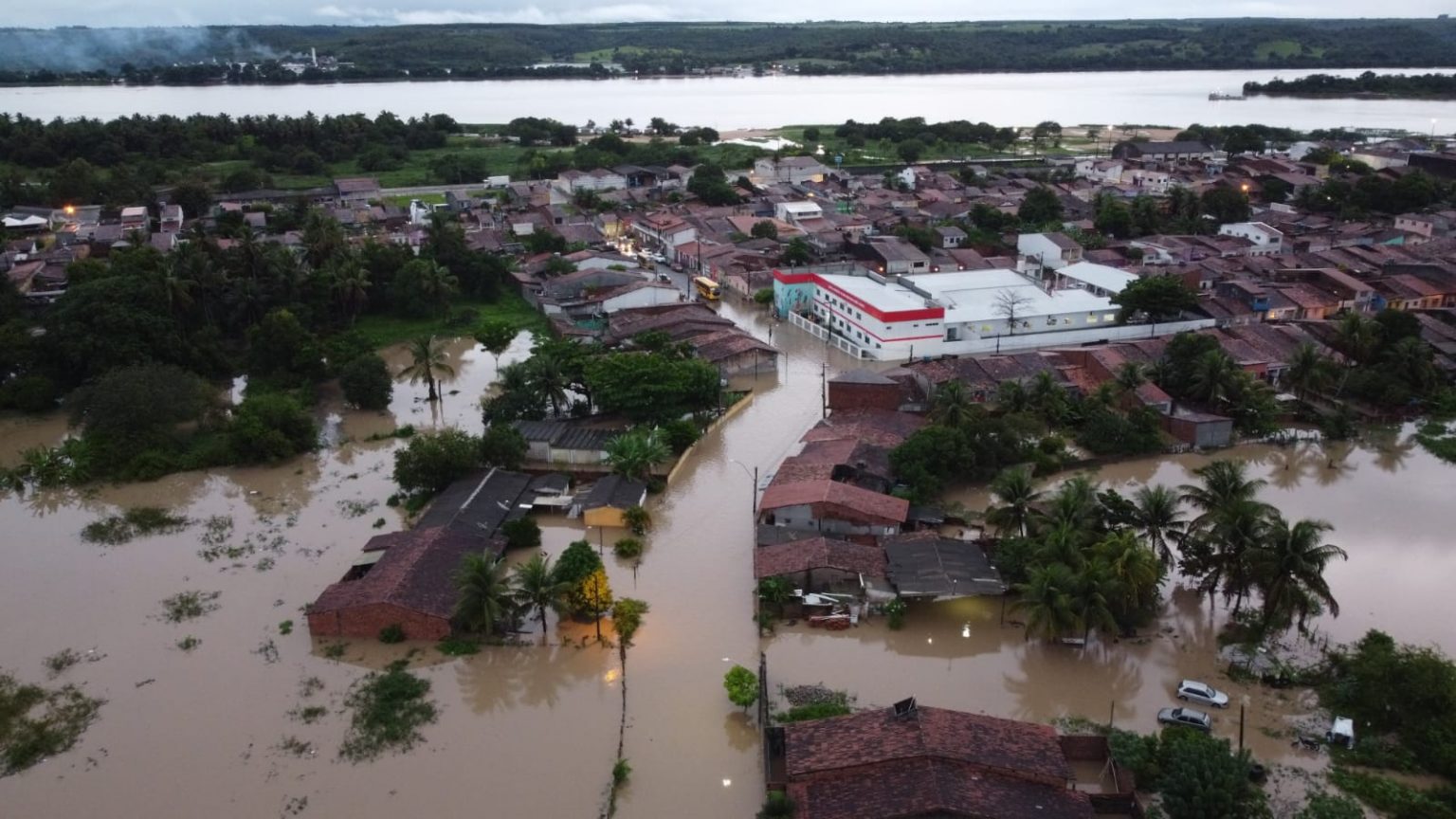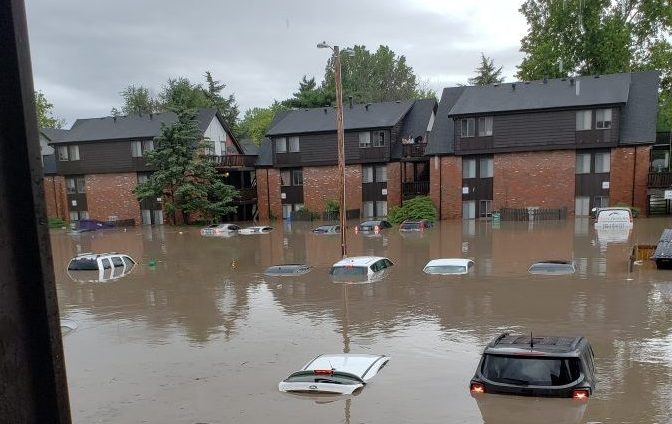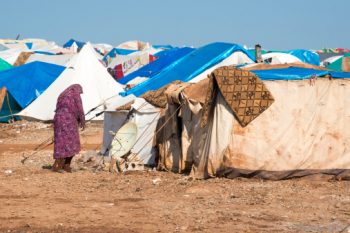

Heavy rains over several days starting around May 23 affected Pernambuco, Alagoas and Paraíba states in northeastern Brazil and caused landslides and flooding. It was the second-worst tragedy in the Pernambuco since the May 1966 flooding affecting the Capibaribe River, and the worst so far this century.
In Pernambuco, the Tejipió river broke through its banks on May 23. Nearly 8 inches of rain was recorded in Recife and the coastal town of Olinda on May 25. At least 31 municipalities in the area declared states of emergency and 54 were affected.
Also, on May 25, the Tanques Reservoir dam broke in Pocinhos in Paraíba due to the heavy rain. In Alagoas, several rivers rose, including the Jacuípe, Paraíba and the Mundaú rivers. And in some southern areas, nearly 10 inches of rain fell on May 24, the equivalent of May’s typical rainfall volume.
Landslides in Pernambuco on Friday, May 27, affected favelas on hillsides, especially in the Recife metropolitan area, a city built on a hillside like many low-income neighborhoods in Brazil. This incident was similar to the mudslides in mid-February 2022 that devastated Petrópolis near Rio de Janeiro.
In 2019, Recife in Pernambuco became the first city in Brazil to declare a climate emergency due to its vulnerability to climate change.
According to The Guardian, “Experts say climate change contributes to more intense rainfall, and the Intergovernmental Panel on Climate Change has classified Recife’s metropolitan region as one of the world’s most vulnerable cities. The low-lying metro region is set at the delta of three rivers, features floodplains and a network of dozens of canals and is home to about 4 million people. In March, Recife became the first Latin American city to sign on for participation in a programme that will create insurance against climate disasters created by a network of local and regional governments and financed by German development bank KfW.”
This was the fourth major flooding event to affect Brazil in the last five months. Reuters reported “[underlines] a lack of urban planning in low-income neighborhoods throughout much of Brazil, where shantytowns are often built on hillsides prone to collapse. The destruction also comes as scientists begin to question whether abnormal rain cycles in Latin America’s largest nation could be a result of climate change.”
There was also significant flooding in Amazonas state for the second consecutive year, as several rivers reached or exceeded flood stage in May, including the Amazon, Jurua, Purus, Negro, Madeira and Solimões. Nearly 370,000 people were affected.
What is the overall impact?
As of June 2, at least 126 people have died with at least two still missing. Causes of death include floods and landslides.
Over 70,000 people were displaced.
As of June 5, the State Civil Defense Coordination (Codecipe) reported that 61,596 people “evicted” (staying with a relative) and 9,631 people were “displaced” (staying at a private or public shelter”.) There are 123 shelters established across 31 cities.
Those people whose homes have been damaged will require protection, emergency shelter and household items, food and nutrition, continuity of access to health care, and water, sanitation and hygiene (WASH).
Cash assistance
The most critical ongoing need is unrestricted cash donations and support for emergency housing for affected families. Many people lost everything in the flooding and landslides. Direct cash assistance can allow families to purchase items and services locally that address their multiple needs. It gives each family flexibility and choice, ensuring that support is relevant and timely. Cash assistance can also help move families faster towards rebuilding their lives.
Long-term recovery
Long-term recovery needs include long-term shelter or rebuilding of homes and community infrastructure, livelihood restoration, economic recovery and COVID-19 support.
Shelter
At least 5,000 people have lost their homes and others received damage. Approximately 70,000 people will need ongoing shelter and transitional housing support
Protection
After a disaster, gender-based violence, including sexual assault and trafficking of vulnerable individuals, is a priority concern. The protection and safety of children and other vulnerable groups, such as people with disabilities, are also major concerns.
COVID-19
As with all countries, COVID-19 has added a layer of complexity to disasters and disaster recovery. As of June 8, 2022, the COVID-19 totals were:
- Brazil: 31,266,163 cases and 667,400 deaths. These numbers are estimated to be severe undercounts due to a lack of testing, tracing and tracking. Brazil has the third-highest number of cases in the world and the second-highest number of deaths.

The Center for Disaster Philanthropy (CDP) has a Global Recovery Fund that provides an opportunity for donors to meet the ongoing and ever-expanding challenges presented by global crises.
Contact CDP
Philanthropic contributions
If you would like to make a donation to the CDP Global Recovery Fund, please contact development.
(Photo: Flooding in Penedo, Brazil, May 2022. Credit: Municipality of Penedo)
Recovery updates
If you are a responding NGO or a donor, please send updates on how you are working in this crisis to tanya.gulliver-garcia@disasterphilanthropy.org.
We welcome the republication of our content. Please credit the Center for Disaster Philanthropy.
Donor recommendations
If you are a donor looking for recommendations on how to help in this crisis, please email regine.webster@disasterphilanthropy.org.
Philanthropic and government support
CDP, in partnership with Google, awarded two grants in 2022 to Associação Voluntários Serviço Internacional Brasil to support flood recovery:
- One grant in the amount of $147,841 will support 100 families affected by the floods in rural Manaus with better agricultural practices that are designed to mitigate the impacts of future floods and provide shorter-term protection in economic, social and mental health.
- The second grant totaled $132,118 and will support the most vulnerable children and their families from the city of Goiana, Pernambuco, Brazil by providing a safe environment and socioemotional and mental health services. Additionally, the grant will strengthen local capacities with Community-Based Organizations and the municipality to continue the activities after the project ends.
Daniel Ferreira, Brazil’s minister of regional development said the government is moving funds to those places that have declared a state of emergency. The government also unveiled a new line of credit for municipalities affected by disasters. On June 1, President Bolsonaro announced that the government will provide $210 million (1 billion Brazilian reais) to assist those affected by the disaster.
More ways to help
As with most disasters, experts recommend cash donations, which allow on-the-ground agencies to direct funds to the greatest area of need, support economic recovery and ensure donation management does not detract from disaster recovery needs.
CDP has also created a list of suggestions for foundations to consider related to disaster giving. These include:
- Take the long view: Even while focusing on immediate needs, remember that it will take some time for the full range of needs to emerge. Be patient in planning for disaster funding. Recovery will take a long time and funding will be needed throughout.
- Recognize there are places private philanthropy can help that government agencies might not: Private funders have opportunities to develop innovative solutions to respond to and help prevent or mitigate future disasters that the government cannot execute.
- All funders are disaster philanthropists: Even if your organization does not work in a particular geographic area or fund immediate relief efforts, you can look for ways to tie disaster funding into your existing mission. If you focus on education, health, children or vulnerable populations, disasters present prime opportunities for funding.
- Ask the experts: If you are considering supporting an organization that is positioned to work in an affected area, do some research. CDP and InterAction can provide resources and guidance about organizations working in affected communities. There are a few local India-based community foundations that can provide insights into nongovernmental organizations (NGOs) that are best suited to respond in a particular community.
Fund resources

Floods
Flooding is our nation’s most common natural disaster. Regardless of whether a lake, river or ocean is actually in view, everyone is at some risk of flooding. Flash floods, tropical storms, increased urbanization and the failing of infrastructure such as dams and levees all play a part — and cause millions (sometimes billions) of dollars in damage across the U.S. each year.

Emergency and Interim Shelter
After a disaster, shelter is more than a place to rest, it is a place of security, access to food, water and medical treatment. A place to start recovering after a disaster.

Landslides
Landslides are a movement of a mass of rock, debris or earth down a slope. Landslides are a type of ‘mass wasting,’ which denotes any down-slope movement of soil and rock under the direct influence of gravity.